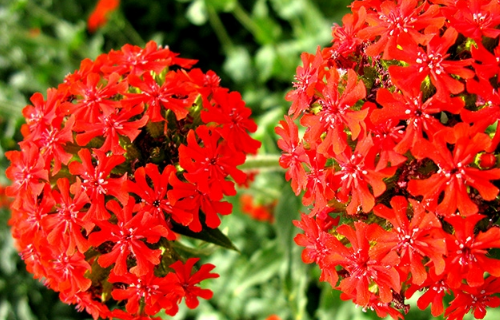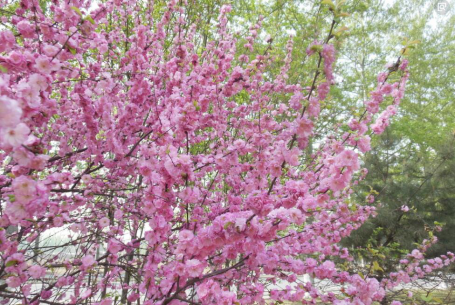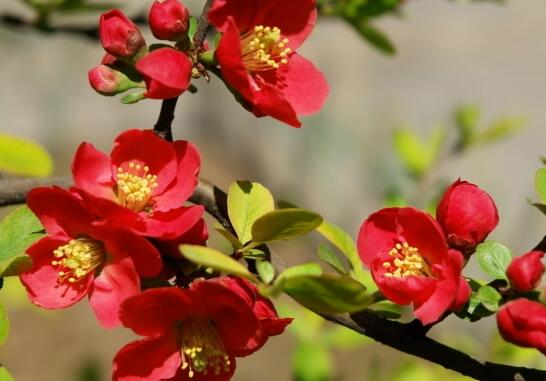Culture method of Xieqiu Luo
Soil
Xieqiuluo does not have very strict requirements for soil in aquaculture, as long as the soil is loose, breathable and well drained, the soil can not only be configured by itself, but also can go to the florist to buy special soil.

Light
Xieqiu Luo is very fond of the sun, it is also more shady, plants generally grow in some shady wetlands, pay attention to maintain sufficient light during the growing period.
Temperature
Xieqiu Luo is very cold-resistant, and the suitable temperature for seed germination is about 20 degrees. If the temperature is too low in winter, it should be moved indoors for maintenance to avoid frostbite.
Humidity
Xieqiu Luo likes a cool and humid growth environment, giving enough water during plant growth, which can also make the plant bloom more, and the flowering period will be extended later, but because the plant is afraid of hot and rainy, so summer watering should be careful not to have stagnant water in the flowerpot, otherwise it is likely to cause the root system of the plant to rot.
The above is about how to raise the introduction of the problem, I believe that to learn these, you can breed a very good Xieqiuluo! So let's take a look at what Xieqiuluo needs to pay attention to.
The maintenance method of Xieqiu Luo
The growth habit of Xieqiu Luo
Xieqiu Luo originated in China, it is characterized by relatively cold-resistant, like a cool climate, requires sufficient light, but can be shady.
Soil conservation method of Xieqiu Luo
In the cultivation of Guiqiu Luo need to choose a suitable soil, its requirements for soil is not high, generally choose soil with good drainage. Basically, calcareous soil rich in humus is fine, and sandy soil is also a good choice.
Watering
Watering is also very important when raising Xieqiu Luo. It prefers to be moist. When it comes to breeding, it should be watered more frequently in spring, watering 3Mel 6 times a month.
Light temperature
In terms of light temperature, it is necessary to meet the needs of Xieqiuluo. It requires sufficient light and suitable temperature, and the suitable temperature for its growth is between 15 ℃ and 35 ℃.
Reproduction method
The reproduction of Tripterygium is generally selected for sowing reproduction or ramet reproduction, but it can be carried out in spring or autumn.
Points for attention in breeding and pruning of Xieqiulo
Pruning should be carried out at the right time when raising Scutellaria, so that it can bloom and grow well. in the early stage of growth, when the plant grows to about 20cm and has 8 leaves, it is necessary to pick the heart in time.
Diseases and insect pests
Leaf spot is a common disease of Xieqiu Luo, in addition to Luo rust, when Xieqiulo begins to attack, it should be treated in time, and fungicides or chemicals can be used to treat it.
Breeding methods and matters needing attention of Maosheiqiu Luo
The Latin name Lychnis coronaria (L.) Desr.
Also known as hairy hair, drunken Xianweng
The plant kingdom.
Family Caryophyllaceae
Genus Scutellaria
Growing hair and shearing Qiu Luo
Maosheiqiu Luo, alias: hairy hair, drunken Xianweng, Latin name: Lychnis coronaria (L.) Desr. Caryophyllaceae, Cymbidium perennial herbs, 40-80 cm high, the whole plant densely covered with gray-white tomentose. Stems erect, stout, sparsely branched. Leaf blade oblanceolate or elliptic, base attenuate, apex acute; cauline leaves sessile, smaller. Dichotomous Cymes sparse; pistil and stamen stalks short, inconspicuous; petals crimson, claws oblanceolate, glabrous, auriculate, limb outline Obovate, apical emarginate; corona narrowly lanceolate, stamens not exserted. Capsule oblong-ovate, seeds reniform, dark brown, with tubercles. The flowering period is from May to June and the fruiting period is from June to July.
1. Morphological characteristics.
Herbs perennial, 40-80 cm tall, whole plant densely gray tomentose. Stems erect, stout, sparsely branched. Basal leaf blade oblanceolate or elliptic, 5-10 cm long and 1-3 cm wide, base attenuate with a handle, apex acute; cauline leaves sessile, smaller. Inflorescences sparse; flowers ca. 25 mm in diameter, pedicels thick, 2 to several times longer than calyx; calyx elliptic-campanulate, 15-17 mm long, subleathery, calyx teeth subulate, 4-7 mm long, often twisted; pistil and stamen stalks short, inconspicuous; petals dark red, 25-30 mm long, claws oblanceolate, glabrous, auriculate, limb outline Obovate, tip emarginate. Corona lobes narrowly lanceolate, 1.5-2.5 mm long; stamens not exserted. Capsule oblong-ovate, ca. 15 mm; seeds reniform, ca. 1 mm, dark brown, tuberculate. The flowering period is from May to June and the fruiting period is from June to July. 2. Growth habits
Cold-resistant, like fertile, not resistant to barren, require well-drained soil, avoid high temperature, waterlogging. The description of the habit is unknown.
3. Geographical distribution
Produced in southern Europe and western Asia. The type specimens were collected from Italy. 4. Taxonomy
Maosheiqiu Luo, alias: hairy hair, drunken Xianweng, Latin name: Lychnis coronaria (L.) Desr. Angiosperm phylum; dicotyledonous class; central seed order; Caryophyllaceae; Cephalophora; Dicotyledon
5. Subordinate species
Maojieqiuo (name of seed plant of Lahan) Mao Cao (economic plant records of North China), Zuixianweng (Chinese seed plant taxonomy) plate 65:1-5 Lychnis coronaria (L.) Desr. In Lam. Encycl. 3: 643. 1789; Pax et Hoffm. In Engler u. Prantl, Nat. Pflanzenfam. 2. Aufl. 16c: 340. Fig. 140c. 1934; supplement to the Atlas of higher plants of China 1: 317. Figure 8559. 1982.--Agrostemma coronaria L., Sp. Pl. four hundred and thirty six。 1753.--Lychnis coriacea Moench, Meth. Pl. seven hundred and nine。 1794. Coronaria coriacea (Moench) Schischk. In Kom. Fl.USSR 6: 699. 1936.
6. Main value
Garden ornamental: urban garden cultivation in China for ornamental use.
- Prev

How do peach blossoms reproduce?
Green peach can be propagated by sowing or grafting, but in order to maintain a high survival rate, grafting is often selected to reproduce green peach blossoms. In the grafting, more bud grafting methods are selected, so that the survival rate of grafting can reach more than 90%. Budding usually takes place from July to September.
- Next

Culture method of Tripterygium
First, the temperature should be suitable. Begonia is a kind of plant that likes warmth and strong adaptability. The most suitable temperature for survival is 15-28 ℃. At the same time, if the temperature is lower than-20 ℃, buried protection is needed to spend the winter. Second, maintain humidity and stick to the stem of begonia to resist drought
Related
- Fuxing push coffee new agricultural production and marketing class: lack of small-scale processing plants
- Jujube rice field leisure farm deep ploughing Yilan for five years to create a space for organic food and play
- Nongyu Farm-A trial of organic papaya for brave women with advanced technology
- Four points for attention in the prevention and control of diseases and insect pests of edible fungi
- How to add nutrient solution to Edible Fungi
- Is there any good way to control edible fungus mites?
- Open Inoculation Technology of Edible Fungi
- Is there any clever way to use fertilizer for edible fungus in winter?
- What agents are used to kill the pathogens of edible fungi in the mushroom shed?
- Rapid drying of Edible Fungi

